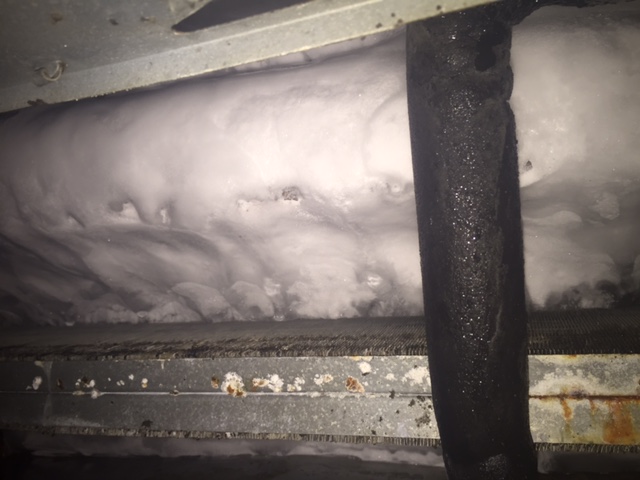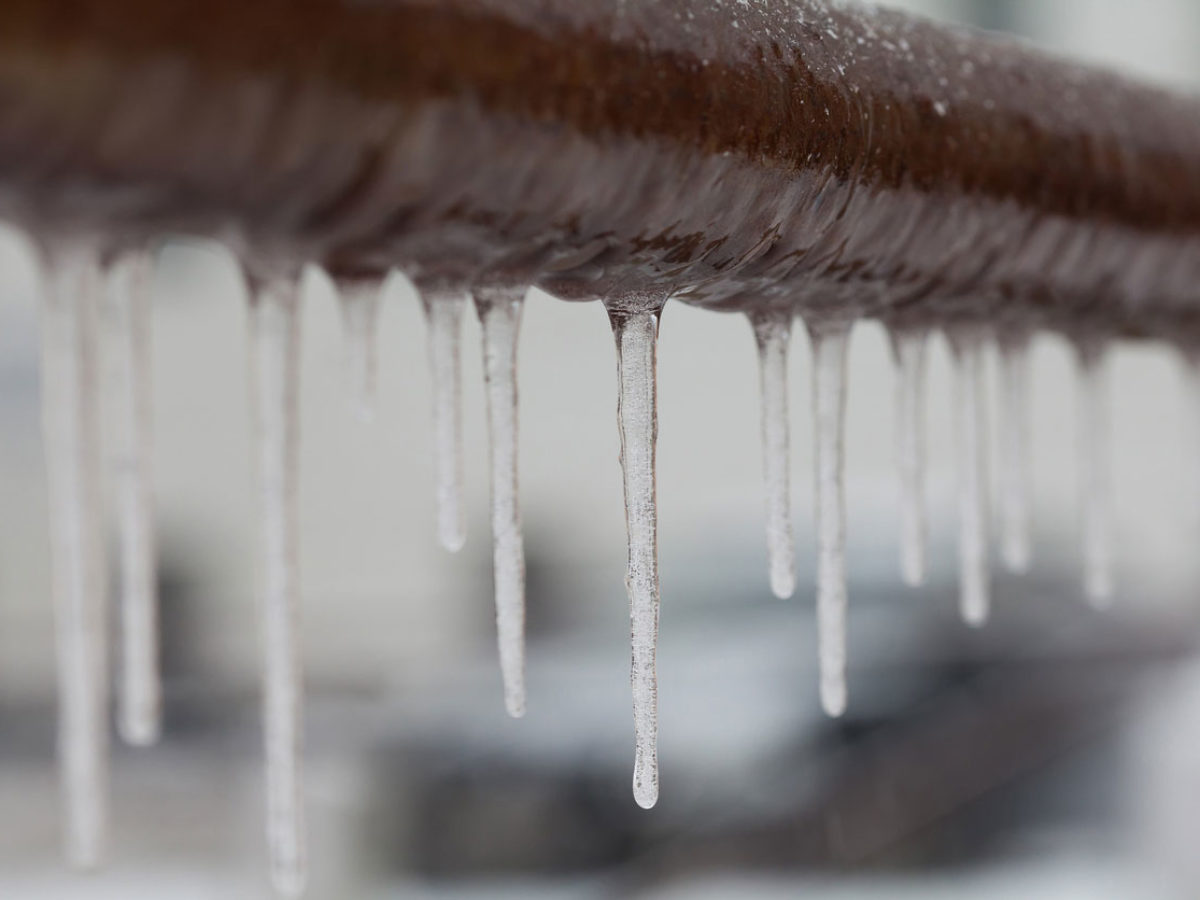Managing a Frozen AC Pipe: Successful Strategies
Managing a Frozen AC Pipe: Successful Strategies
Blog Article
The article which follows pertaining to What Causes AC Pipes To Freeze? is truly enlightening. Read it for your own benefit and decide what you think of it.

Introduction
Uncovering that your a/c pipe is iced up can be worrying, particularly during warm summer season when you depend on your air conditioning system one of the most. Recognizing what to do in such a situation is essential to stop further damages to your air conditioning system and ensure your comfort indoors.
Understanding the Causes
Numerous variables can add to the freezing of an air conditioning pipe. Recognizing these reasons can help you resolve the issue properly.
Lack of Airflow
One usual reason for an icy AC pipe is inadequate air flow. When the air flow over the evaporator coil is limited, it can create the coil to go down below freezing temperature, resulting in ice formation on the pipeline.
Reduced Refrigerant Levels
Insufficient refrigerant degrees in your AC system can additionally result in a frozen pipeline. Reduced refrigerant degrees can trigger the stress in the system to drop, resulting in the cold of dampness on the evaporator coil.
Winter Conditions
In cooler climates, freezing temperatures outside can add to the freezing of AC pipelines. If your a/c unit is not appropriately insulated or if there are leaks in the ductwork, cold air can penetrate the system, triggering the pipeline to ice up.
Dirty Air Filters
Unclean or blocked air filters can limit air flow in your air conditioner system, bring about different concerns, including a frozen pipe. It's important to replace or clean your air filters frequently to ensure correct airflow and protect against ice accumulation.
Indications of a Frozen AC Pipe
Acknowledging the signs of an icy AC pipe is essential for prompt action.
Lowered Airflow
If you notice a considerable decline in airflow from your vents, it might show an icy pipeline.
Ice Buildup on the Pipe
Noticeable ice buildup on the refrigerant line or the evaporator coil is a clear indicator of an icy air conditioner pipeline.
Weird Sounds from the Unit
Unusual sounds, such as hissing or bubbling, originating from your air conditioner device can signify that there's ice existing on the pipeline.
Immediate Actions to Take
When confronted with an icy air conditioning pipe, it's necessary to act rapidly to stop additional damage to your air conditioning system.
Turning off the a/c
The first step is to shut off your ac system to avoid the system from running and exacerbating the problem.
Looking for Blockages
Check the location around the indoor unit for any kind of blockages that may be blocking airflow, such as furnishings or curtains.
Defrosting the Pipe
You can use gentle approaches like putting towels taken in warm water around the icy pipeline to assist thaw it slowly.
Safety nets
Taking safety nets can assist prevent future occurrences of a frozen AC pipeline.
When DIY Methods Fail
If your attempts to thaw the pipe or address other concerns are not successful, it's time to call a professional.
Value of Hiring a Professional HVAC Technician
A licensed HVAC service technician has the experience and devices required to diagnose and fix problems with your AC system securely and efficiently.
Normal Maintenance Checks
Arrange regular upkeep talk to a professional HVAC service technician to ensure that your AC system is running effectively.
Transforming Air Filters
Frequently change or cleanse your air filters to prevent airflow limitations and preserve optimum efficiency.
Insulating Exposed Pipes
If your AC pipelines are exposed to cold temperatures, think about protecting them to prevent freezing during winter season.
Seeking Professional Help
If DIY techniques fall short to settle the concern or if you're unclear concerning just how to continue, it's best to look for assistance from a certified HVAC technician.
Verdict
Handling an icy a/c pipe can be a frustrating experience, yet recognizing just how to react can aid decrease damages and bring back comfort to your home. By understanding the causes, recognizing the indications, and taking prompt activity, you can properly attend to the problem and avoid future occurrences.
What to Do If Your AC Line Is Frozen
Make Sure All Supply and Return Air Vents Are Open
If you notice problems with airflow, the first thing you should do is check your supply and return vents. Supply vents distribute clean, conditioned air throughout your home. As this air becomes stale, it’s pulled into the return vent, where it’s reconditioned before being sent back out through the supply vent.
When these vents are closed, air won’t flow in the home. Before examining your AC, check the vents in every room and ensure they’re all open.
Check for a Dirty Air Filter
Another possible cause of limited airflow is a dirty air filter. Your air conditioner’s filters catch elements you don’t want to breathe in, such as dirt and dust. Over time, filters can become clogged, ultimately blocking air from flowing in and out. The lack of airflow can then cause the entire coil to freeze and will completely restrict any air from moving through it. The AC may need to be powered off for one to two days to allow the coil to thaw after replacing the filter to allow proper functioning of the unit. This debris can also accumulate on your AC’s evaporator coil, requiring a more serious repair. In general, air filters should be cleaned regularly (about every two weeks).
Assess Your Outdoor Unit
In addition to checking your AC, assessing the outdoor unit is a good idea. Also known as the condensing unit, it works with your interior unit to release heat outside. An issue with the outdoor unit can result in rising internal temperatures.
Overgrown Shrubs or Clogged Leaves
From leaves and twigs to shrubs and debris, there’s no shortage of outdoor elements that can accumulate around your condensing unit. When these elements get lodged inside the unit, they can block airflow. Fortunately, removing the blockage can solve the problem.
Sounds of a Broken Fan
Shrubs and leaves aren’t the only things that can impede your outdoor unit’s airflow. If the fan is broken, the unit won’t be able to properly get rid of heat — which means the internal temperature won’t go down. First, make sure the fan is spinning. If it is, check for the following sounds of a broken fan:
Buzzing Rattling Screeching Hissing Clicking Preventative Measures
Nobody wants to deal with a frozen AC line. In addition to causing problems with your air conditioner, they require professional repairs. On the bright side, there are preventative measures you can take to help ensure this issue doesn’t arise in the first place.
https://www.coopergreenteam.com/blog/what-to-do-if-ac-line-frozen

As a devoted reader on Why Is Ice On My Outside Air Conditione, I assumed sharing that excerpt was sensible. Those who enjoyed reading our post kindly make sure you remember to share it. Thanks so much for going through it.
Click Here Report this page